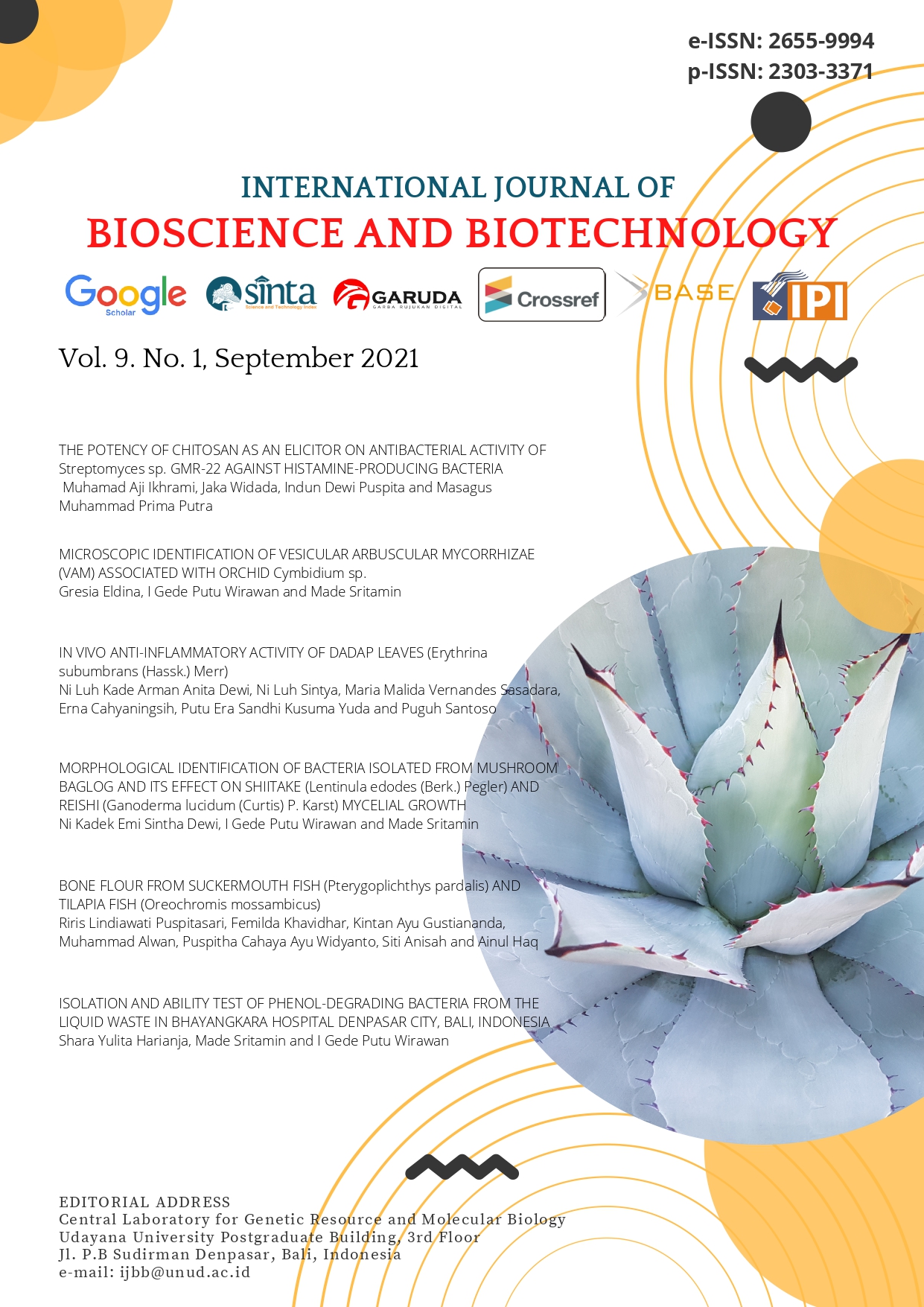BONE FLOUR FROM SUCKERMOUTH FISH (Pterygoplichthys pardalis) AND TILAPIA FISH (Oreochromis mossambicus)
Abstract
Fish is often used as a protein source in food. Fish has good nutritional content for the body such as protein, vitamin, mineral, and unsaturated fatty acid. Pterygoplichthys pardalis and Oreochromis mossambicus are some of the local fishes that are frequently found in a river in Indonesia, also Asia. People use their meat as food. Unfortunately, people do not use fishbones. In this research, we processed the fishbone into flour which could be used as food or supplement. Fishes were collected from the breeder in January to May 2019. Bone processing methods carried out by separation of fish meat and bone, continued with bone flour processing using oven and grinder. According to the proximate analysis revealed that P. pardalis bone flour contained 25.047% protein, 10.478% fat, 0.656% water, 59.463% ash, and 4.353% carbohydrate. O. mossambicus also contained 36.929% protein, 11.942% fat, 2.575% water, 45.721% ash, and 2.833% carbohydrate. From these results, protein in P. pardalis gave a higher value than O. mossambicus. Bone flour from both fishes showed a smooth texture and whitish color. Bone flour from fish has good prospects to be developed to get complete analysis in food technology. Bone flour from suckermouth fish played important role in aquaculture and supported the river biodiversity.






